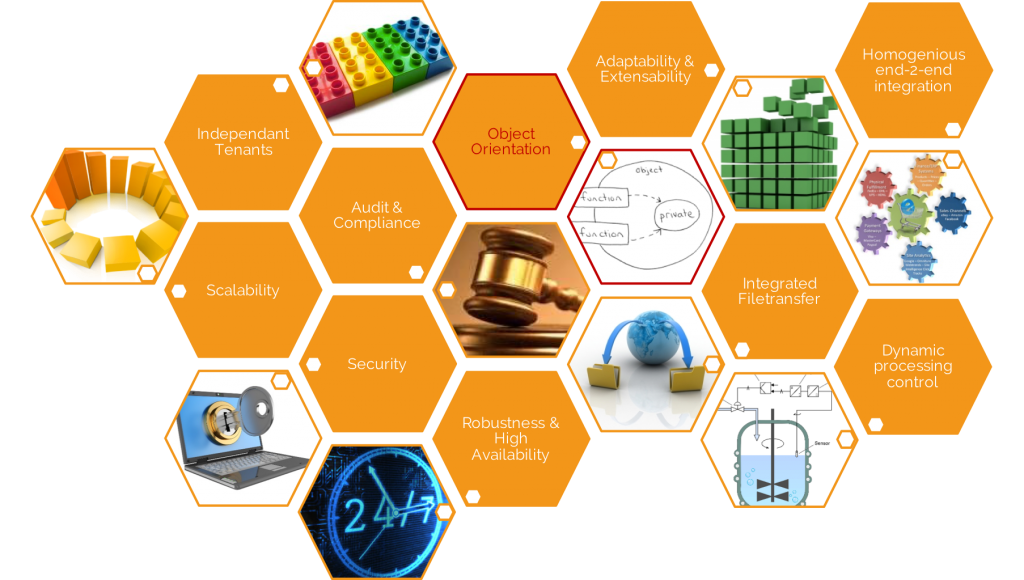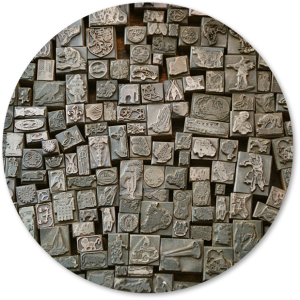Object Orientation supports Efficiency in Automation Solutions

Infograph: Automation - Object Orientation
This post is part of the "Automation-Orchestration" architecture series. Posts of this series together comprise a whitepaper on Automation and Orchestration for Innovative IT-aaS Architectures.
A software architecture pattern for an IT oriented automation solution? How would this work together? Let’s have a closer look:
SOLID object orientation
Software guru Robert C. Martin identified “the first five principals” of object-oriented design in the early 2000’s. Michael Feathers introduced the acronym SOLID to easily remember these five basics that developers and architects should follow to ensure they are creating systems that are easy to maintain and to extend over time.[1]
- Single responsibility: any given object shall have exactly one responsibility or one reason to change.
- Open-close: any given object shall be closed for modification but open for extension.
- Liskov substitution principle: any given live instance of a given object shall be replaceable with instances of the objects subtypes without altering the correctness of the program.
- Interface segregation: every interface shall have a clear and encapsulated purpose; interface consumers must be able to focus on the interface needed and not be forced to implement interfaces they do not need.
- Dependency inversion: create any dependency to an object’s abstraction not to its actual presence
The SOLID principle and other object-oriented patterns, are discussed further in this article: Object-Oriented-Design-Principles
“SOLID” IT automation
Many of today’s enterprise workload automation solutions were developed with architectural patterns in mind, which date back well before the advance of object orientation. In order to avoid the risk of immaturity of the solution, patterns weren’t innovated in some cases. At the same time, the demand for rapid change, target-dependent concretion and re-usability of implementations has been increasing. An object oriented approach can now be used as a means to support these new requirements.
Object orientation, therefore, should be one of the key architectural patterns of an innovative enterprise automation solution. Such a solution encapsulates data and logic within automation objects and thereby represent what could be called an “automation blueprint.” The object presents a well-defined “input interface” through which a runtime-instance of the automation object can be augmented according to the requirements of the specific scenario.
Through interaction with automation objects, an object-oriented workflow can be defined, thus presenting an aggregated automation object. By employing the patterns of object-oriented architecture and design, developers ensure that the implementation of automation scenarios evolves into object interaction, re-usability, specialization of abstracted out-of-the-box use-cases, and resolves specific business problems in a dedicated and efficient way.
Enterprise-grade, innovative automation solutions define all automation instructions as different types of objects within any kind of object repository – similar to traditional object oriented programming languages. Basic definition of automation tasks is represented as “automation blueprints”. Through instantiation, aggregation and/or specialization, the static object library becomes the arbitrary, dedicated, business process oriented solution to execute and perform business automation.

The figure above shows an example of how an object can be instantiated as a dedicated task within different workflows.
IT-aaS example
The following IT-aaS example illustrates an object-oriented automation pattern. The chosen scenario assumes that an IT provider intends to offer an IT service to request, approve, and automatically provision a new, compliant infrastructure service such as a web application server.
- Object definition: A set of aggregated objects – automation blueprints – define how to provision a new server within a certain environment. The object definition would not – however – bind its capability to a specific hypervisor or public cloud provider.
- Object instantiation: Request logic – realized for example in a service desk application – would implement blueprint instantiation including the querying (e.g. by user input or by retrieval from a CMDB) and forwarding of the parameters to the objects’ instance.
This not only automates the service provisioning but also addresses burst-out scenarios required by modern IT service delivery through integrated automation.
Patterns benefitting from object reusability
The concept of object orientation allows the reuse of automation objects eliminating the need to duplicate information. It also allows the creation of automation blueprints describing the automation logic that is processed at runtime. An automation blueprint can behave differently once it gets instantiated during runtime because of features like integrated scripting, variables, pre- and post conditional logic, and logical programming elements such as conditions and loop constructs.
Inheritance
Automation objects’ relationships and dependencies as well as input/output data are set at the time they are defined. Run-time instantiated objects can inherit their input parameters from parent objects. They can also pass parameters from one runtime instance to another as well as to their parent containers. This enables fully flexible multi-processing of business workflows without e.g. being forced to clean-up variables in static containers.
Abstraction versus Specialization
Automation blueprint definitions form the basic abstraction of scenarios within an enterprise-grade automation platform. Abstract automation objects get their concrete execution information when instantiated. Object oriented platforms provide the means to augment the instantiated objects at runtime via patterns like prompt sets, database variables or condition sets – in the best case to be modeled graphically; this supports flexibility and dynamic execution.
Maintainability
As the concept of object orientation eliminates the need for duplication of automation logic, maintaining automation workflow definitions becomes minor. Typical modifications such as changes of technical user-ids, path/binary name etc. can be performed in a centrally defined object and is applied wherever the object (blueprint) is used.




